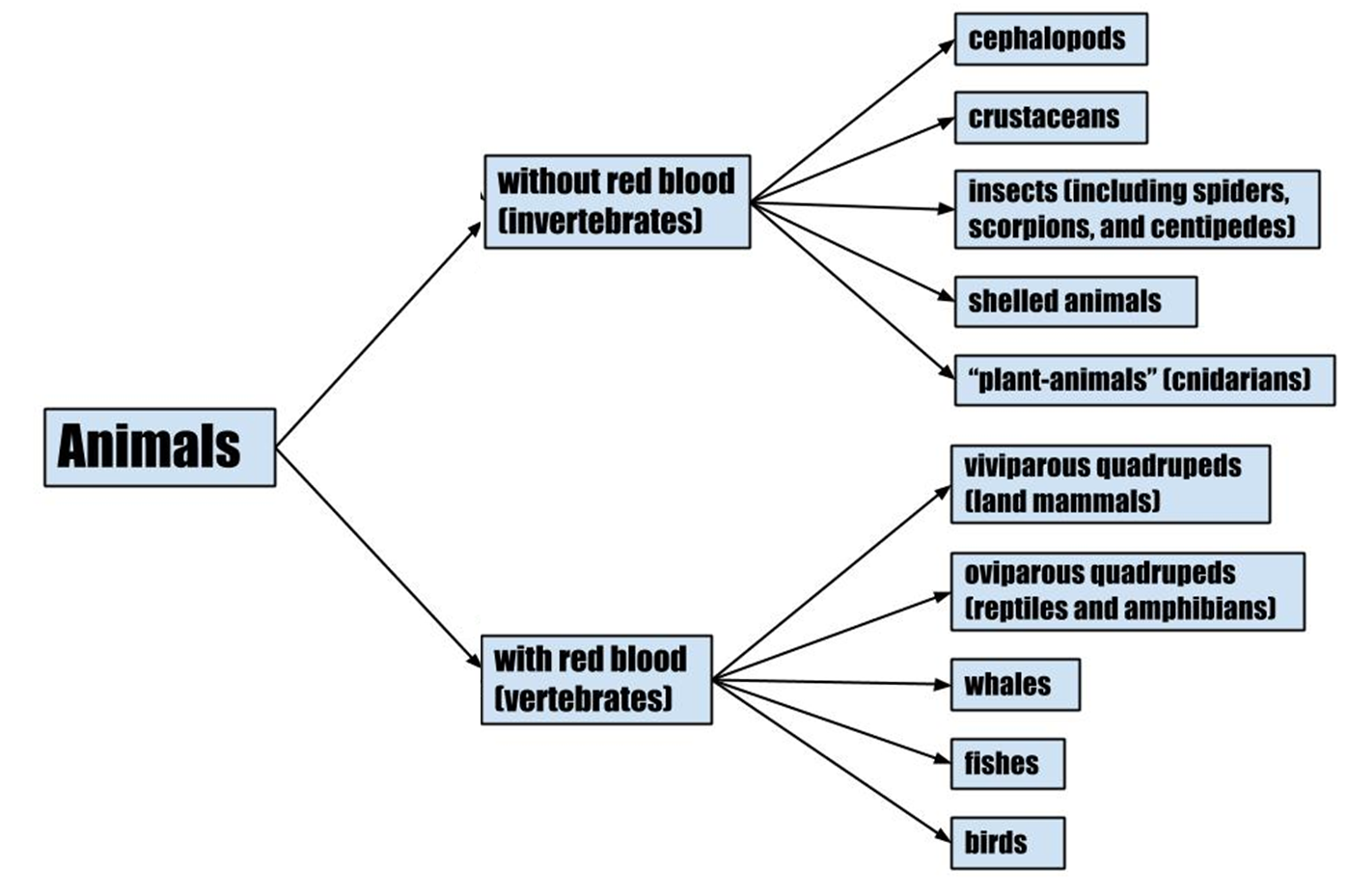
Aristotle classified the animals into two groups. Which of the following is the correct one?
A. Vertebrate and invertebrate
B. Chordata and non-chordata
C. Protozoa
D. Enaima and anaima
Answer
503.1k+ views
Hint: Aristotle is also known as 'Father of Biology' for making a successful attempt to classify animals into specific categories that consequently gave a systematic approach to biology. This classification was based on physical characteristics possessed by the animals.
Complete answer:
He categorized animals into two groups, followed by five genera per group, and then into species within each genus. The two major groups of animals according to his classification were based on presence or absence of "red blood." Animals with red blood flowing in their bodies were named as Enaima (today’s vertebrates) whereas animals without any such red blood flowing in their bodies, were named as Anaima (today’s invertebrates).
Enaima included viviparous (infant yielding) and oviparous (egg yielding) organisms such as whales, fishes, and birds. On the other hand, anaima included cephalopods, crustaceans, insects, shelled animals, and plant animals.

Fig: Flowchart showing Aristotle’s classification of animals.
However, the classification had some major drawbacks as well that have been enlisted below:
A variety of unrelated organisms are placed in the same group, due to their matching habitats.
A variety of related organisms are placed in varied groups due to dissimilarities in their morphological characters.
While classifying organisms, the evolutionary relationship between them has been completely neglected.
So, the correct answer is option d, ‘Enaima and anaima’.
Note: It is necessary to classify animals to understand diversity according to a uniform classification system. Classification allows us to understand physiology, behavior, and various other aspects of an organism. Classification is also important to derive phylogenetic relationships between the organisms.
Complete answer:
He categorized animals into two groups, followed by five genera per group, and then into species within each genus. The two major groups of animals according to his classification were based on presence or absence of "red blood." Animals with red blood flowing in their bodies were named as Enaima (today’s vertebrates) whereas animals without any such red blood flowing in their bodies, were named as Anaima (today’s invertebrates).
Enaima included viviparous (infant yielding) and oviparous (egg yielding) organisms such as whales, fishes, and birds. On the other hand, anaima included cephalopods, crustaceans, insects, shelled animals, and plant animals.

Fig: Flowchart showing Aristotle’s classification of animals.
However, the classification had some major drawbacks as well that have been enlisted below:
A variety of unrelated organisms are placed in the same group, due to their matching habitats.
A variety of related organisms are placed in varied groups due to dissimilarities in their morphological characters.
While classifying organisms, the evolutionary relationship between them has been completely neglected.
So, the correct answer is option d, ‘Enaima and anaima’.
Note: It is necessary to classify animals to understand diversity according to a uniform classification system. Classification allows us to understand physiology, behavior, and various other aspects of an organism. Classification is also important to derive phylogenetic relationships between the organisms.
Recently Updated Pages
The number of solutions in x in 02pi for which sqrt class 12 maths CBSE

Write any two methods of preparation of phenol Give class 12 chemistry CBSE

Differentiate between action potential and resting class 12 biology CBSE

Two plane mirrors arranged at right angles to each class 12 physics CBSE

Which of the following molecules is are chiral A I class 12 chemistry CBSE

Name different types of neurons and give one function class 12 biology CBSE

Trending doubts
One Metric ton is equal to kg A 10000 B 1000 C 100 class 11 physics CBSE

Explain zero factorial class 11 maths CBSE

What is 1s 2s 2p 3s 3p class 11 chemistry CBSE

Discuss the various forms of bacteria class 11 biology CBSE

State the laws of reflection of light

Difference Between Prokaryotic Cells and Eukaryotic Cells




